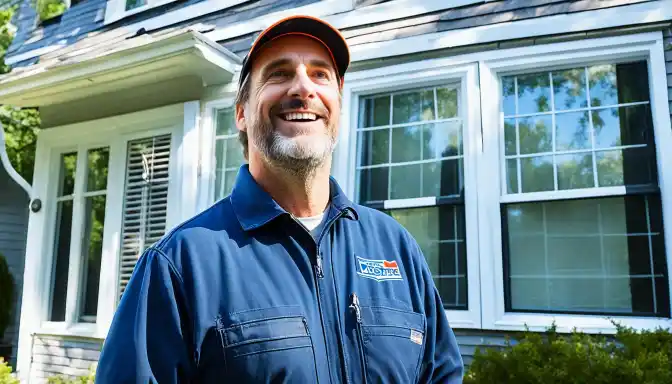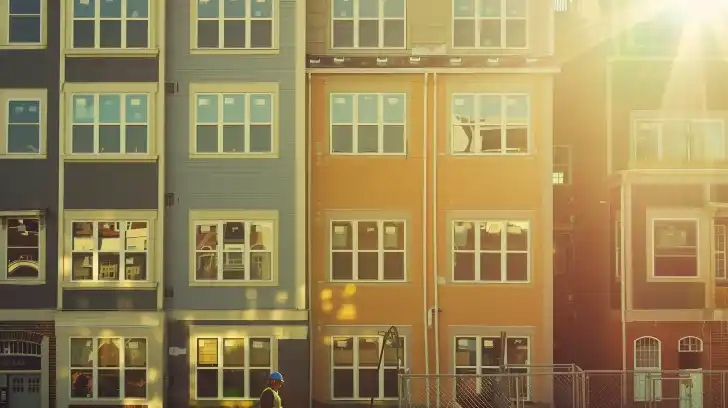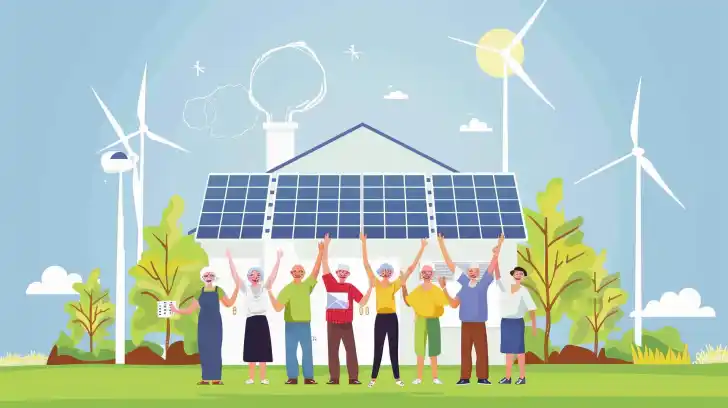New Window Replacement Grants Slash Homeowner Costs – Government Takes Action
Published on
6 minute read

Across the U.S., the government is pushing for better household energy efficiency. This is great news for savvy homeowners. With new grants for window replacement, you can now save money and energy. These grants help cover the cost of switching to energy-efficient windows.
Windows can be a big source of energy use, making up 25%–30% of it. The government’s programs offer solutions to fix this. Homeowners can get help with air leak tests, adding weatherstripping, and more. There are also discounts and financing options available for full window replacements, including tax credits and rebates.
By choosing ENERGY STAR and NFRC certified windows, families can improve their comfort and save money. These high-quality products are designed for different climates. They help keep homes cozy and reduce maintenance costs over time.
Key Takeaways
- Investigating and applying for window replacement grants can yield significant savings for homeowners.
- Replacing windows with ENERGY STAR and NFRC certified products is key to improving energy efficiency.
- Government home improvement grants cater to a range of energy-saving interventions, including window upgrades.
- Window replacements can be financed affordably with the help of various incentives.
- Window replacement tax credits and rebates can substantially lower the initial investment costs.
- Permanent reductions in energy bills can be achieved by minimizing energy loss through windows.
The Role of Energy-Efficient Windows in Reducing Homeowner Costs
Homeowners are always looking for ways to cut down on energy costs. Energy-efficient windows play a big role in this. They not only save on energy but also boost home value and curb appeal. When thinking about replacing windows, it’s important to consider many factors. This includes eligibility and the application process for window replacement.

To meet window replacement requirements, it’s crucial to understand all the qualifications. Working with the right window replacement contractors is key. ENERGY STAR and NFRC-certified products match your climate best. A good installation can improve energy use, security, and lessen outside noise.
Understanding Residential Energy Consumption
How well windows keep heat in or out is vital for saving energy at home. Sometimes, completely replacing windows is better for energy savings than just updating them. But, it’s important to know the difference between the two.
Upgrading Existing Windows vs. Full Window Replacement
Deciding between upgrading windows or full replacement requires thought. The current condition and durability of the windows matter. New window replacement materials and technology offer improvements. These include better noise reduction and security features.
Maximizing Home Comfort and Energy Bills Savings
The choice often depends on the return on investment (ROI) of window replacement. Other considerations are improved home comfort and lowering environmental impact. With proper window replacement maintenance, the benefits last long. This makes the investment not just cost-effective but also sustainable.
| Feature | Energy-Efficient Windows Benefits | Traditional Windows |
|---|---|---|
| Energy Savings | High performance in thermal insulation, leading to significant energy bill reductions | Minimal energy savings, higher bills |
| ROI | Improved property value and potential for higher ROI | Lower ROI due to lack of modern features |
| Maintenance | Low maintenance with longer lifespan | Possible frequent repairs and higher long-term costs |
| Sound Insulation | Superior noise reduction capabilities | Less effective at blocking external noise |
| Warranty | Long-term warranties available, ensuring peace of mind | Shorter warranty periods, potentially higher risks |
| Home Value | Increases home value and buyer appeal | May not contribute to home value significantly |
Window Replacement Grants and Homeowner Benefits
The United States government is helping homeowners through the Weatherization Assistance Program. This comes from the Bipartisan Infrastructure Law. With $3.16 billion provided, the goal is to make houses more resilient, especially for those with low income. This money helps improve home energy efficiency. It is a key part of creating energy equality across the country. The program offers window replacement grants. This makes homes more comfortable and helps the environment.
This effort is more than just financial aid. It gives people the tools to make their homes better insulated. They can also get energy-efficient heating and cooling systems. This leads to lower energy bills and less energy use. The program combines financial help with a dedication to environmental fairness. It ensures that underserved communities are included in efforts to make housing more climate-resilient.
These government programs have several goals. They aim to make homes more comfortable, reduce carbon emissions, and create environmentally friendly jobs. This has benefits that reach beyond just the homeowner. Updated homes show how the country is moving towards energy independence and sustainability. The Weatherization Assistance Program is a key part of the Justice40 initiative. It works to make sure resources are shared fairly. This way, everyone, including those who are disadvantaged, can be part of a greener future.
FAQ
What are window replacement grants and how can homeowners apply?
Window replacement grants help homeowners pay to replace old windows with new energy-saving ones. These grants are part of larger home improvement programs. To apply, check if you’re eligible based on income. Then, follow the application steps, which can differ by state or program.
Can homeowners get tax credits or rebates for window replacement?
Yes, to encourage energy-saving windows, many places offer tax credits and rebates. This can lower your costs. To find out what’s available, talk to local government or energy programs.
Are there any specific window replacement savings for low-income families?
Yes, special savings and grants are there for low-income families. The Weatherization Assistance Program is one. It offers services and upgrades to lower energy bills and make homes more comfortable for those who qualify.
How do energy-efficient windows contribute to reducing homeowners’ costs?
Energy-efficient windows keep your home’s temperature steady, reducing the need to heat or cool it. This saves money on energy bills. Such windows also increase your home’s value and look.
What should homeowners consider when deciding between upgrading existing windows or opting for a full window replacement?
Think about your windows’ condition and the savings from new windows. Also, consider if improving your current windows is enough. Look at the material, glass types, and installation when choosing new windows.
What kinds of materials and styles are available for energy-efficient window replacements?
You can choose from materials like vinyl, wood, aluminum, and fiberglass for new windows. They come in many styles, like double-hung or casement. There are lots of custom options to fit your home’s look.
How can homeowners ensure the energy efficiency of their new windows?
Look for ENERGY STAR and NFRC labels to find efficient windows. It’s important to pick windows right for your climate. Make sure they’re installed well, too.
What funding is available through the Weatherization Assistance Program and who qualifies?
This program, supported by the Bipartisan Infrastructure Law, funds energy-saving upgrades for low-income families. You might qualify based on income, family size, or energy use.
How does window replacement impact home value and curb appeal?
New windows make your home look better and can raise its value. Energy-efficient windows are also appealing to buyers, improving your chances of a good sale.
What are the long-term benefits of window replacement in terms of maintenance and durability?
Quality energy-efficient windows last longer and need less upkeep, especially if they’re made from tough materials like vinyl or fiberglass. This saves you money and hassle over time.
How do window replacements contribute to environmental sustainability?
By making homes use less energy, new windows reduce pollution and greenhouse gases. This helps the environment and supports energy-saving goals worldwide.



